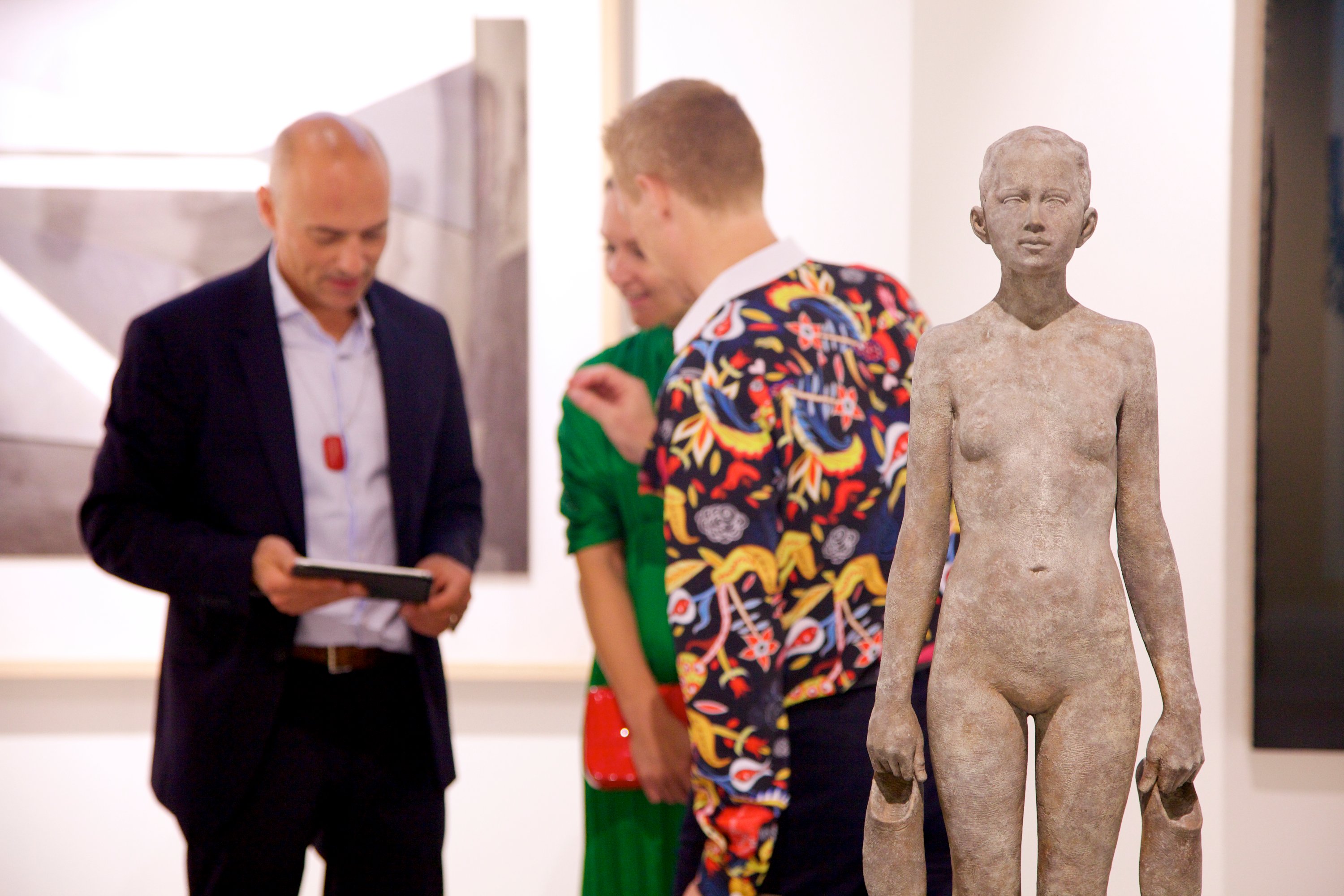
Strange as it may seem, art fair season is back in fairly full swing. Hot off the heels of the Armory Week shows in New York, collectors and gallerists are already jetting off to Switzerland for Art Basel. While VOLTA Art Fair was absent from the New York circuit this year (but don’t count them out, they will be back next year) the fair will be presenting in Basel.
Though in past years the fair has emphasized one-artist presentations, this year, galleries can showcase curated multi-artist booths. Many have still opted for solo or two-artist presentations even so.
“While in the past, VOLTA opted for a single-booth presentation, we can’t force galleries to just showcase one artist, especially in times like these where galleries need to sell. Having two-artist booths makes it look cleaner and galleries like to have dialogues between their artists and their works,” said fair director Kamiar Maleki.
In a newly renovated space, VOLTA returns for its 16th edition with some 69 galleries from across five continents and 50 cities. There’s a lot for the eyes to take in, so to get you started, we’ve picked five booths worth looking out for.
Yoca Muta at Gallery Kogure
Yoca Muta, Awakening (2021). Courtesy of Gallery Kogure.
Tokyo’s Gallery Kogure, a long-time fair exhibitor, is presenting work by the dazzling ceramic artist Yoca Muta. Called kutani-yaki (Japanese porcelain), the often whimsical sculptures blend traditional methods with pop culture references like western drawings and contemporary Japanese manga.
Boldi and Mózes Incze at Léna Roselli Gallery
Mózes Incze, Assisted Advent (2021). Courtesy of Léna Roselli Gallery.
Budapest’s Léna Roselli Gallery is presenting works by two artists, the sculptor Boldi and Hungarian painter Mózes Incze. Incze’s oil paintings combine Surrealist passages—floating limbs and De Chirico-esque architectural spaces—with impassioned abstract passages. Boldi’s marble sculptures, on the other hand, follow in an aesthetic of modernist sculpture that references Henry Moore and Cubist sculptors.
Galerie Thomas Fuchs
Yongchul Kim, Hund und Kaktus. Courtesy of Galerie Thomas Fuchs.
VOLTA patron Galerie Thomas Fuchs is bringing new works by five artists: Rainer Fetting, Sebastian Gumpinger, Jochen Hein, Ruprecht von Kaufmann, and Yongchul Kim. The presentation leans mostly toward contemporary painting. German artist Rainer Fetting, now in his 70s, presents bright new paintings inspired by the island of Sylt. Ruprecht von Kaufmann, meanwhile, presents a mysterious world of dream-like symbols and figures. Even the one sculptor in the bunch, Sebastian Gumpinger, calls his steel and copper plate works “steel paintings”—he uses an angle grinder to draw a continuous line on the surfaces offering delicate, almost paper-like creations.
Austin Eddy and Natalia Wróbel at Abigail Ogilvy Gallery
Austin Eddy, Untitled 2. Courtesy of Abigail Ogilvy Gallery.
The gallery refers to artists Austin Eddy and Natalia Wróbel as “two true painters.” Eddy’s works are semi-representational and attempt to capture the moods and emotions of different individuals, which he conveys in the most reduced terms possible, all while toying with the playfulness and perceived seriousness of painting. Wróbel paints in bold, pulsating swirls of color that draw inspiration from such disparate ideas as jazz, neural networks, and lyric poetry, all varied interpretations of interconnectedness.
Galerie Mark Hachem
Dario Perez Flores, Prochromatique no 1117 (2020). Courtesy of Galerie Mark Hachem.
Paris’s Galerie Mark Hachem has a longstanding commitment to supporting artists of the kinetic art movement, from the progenitors of the style to those exploring similar ideas today. This year it has devoted its presentation primarily to artists working in kineticism and Op Art. Historically significant works by Jesús Rafael Soto and Carlos Cruz Diez will be on display, along with the works of two contemporary Venezuelan artists, Darios Perez Flores and Rafael Barrios, whose works center around questions of perception.